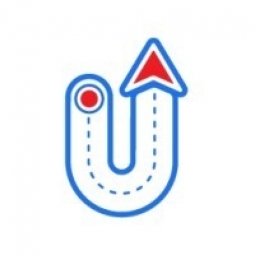Applicable Industries
- Retail
- Transportation
Applicable Functions
- Logistics & Transportation
- Maintenance
Use Cases
- Last Mile Delivery
- Vehicle Telematics
Services
- System Integration
- Training
About The Customer
Neill’s Home Store is a family-owned retail furniture store based in Branson, Missouri. The company serves homeowners in the area with exceptional furniture delivery services. In addition to selling furniture, the company also handles some repair services. The company was facing significant challenges in its delivery operations, including inefficient route planning, difficulty in managing multiple orders, and issues with resource allocation. The traditional process of using manual paperwork and big office boards to manage order dispatch and delivery processes was proving to be ineffective and time-consuming.
The Challenge
Neill’s Home Store, a family-owned retail furniture store in Branson, Missouri, was facing significant challenges in its delivery operations. The process from route planning to furniture delivery was time-consuming and inefficient, with the company relying heavily on manual paperwork. The task of delivering furniture to lake home residents was particularly challenging, especially when there were multiple orders. Manually scheduling routes for each delivery was a cumbersome process that not only reduced delivery efficiency but also increased the workload of their employees. The company also relied on big office boards to manage order dispatch and delivery processes, which proved to be ineffective. Misplacement of papers was a common issue, leading to lost hours managing delivery records. The adoption of a file folder system brought about scalability and accessibility challenges. The company also handled repair services, adding another layer of complexity to their task distribution. Efficient resource allocation was a constant struggle, hampering their ability to optimize delivery routes effectively.
The Solution
To overcome these challenges, Neill’s Home Store turned to Upper, a route optimization software. The software automated the route planning and optimization process, saving the company significant time and effort. The delivery team found it easier to accommodate extra deliveries as they had a clear picture of the ongoing process. The software also helped with advanced route scheduling for furniture deliveries, allowing the company to schedule routes for delivery orders weeks or months in advance. This process enabled the delivery team to complete route scheduling for months in minimum hours instead of finding routes daily. Upper also provided a digital checklist that allowed dispatchers to see whether the driver had completed the delivery or not. The software's dedicated driver app streamlined the delivery process, making it easier to track drivers and breakdown successful deliveries.
Operational Impact
Quantitative Benefit

Case Study missing?
Start adding your own!
Register with your work email and create a new case study profile for your business.
Related Case Studies.

Case Study
Airport SCADA Systems Improve Service Levels
Modern airports are one of the busiest environments on Earth and rely on process automation equipment to ensure service operators achieve their KPIs. Increasingly airport SCADA systems are being used to control all aspects of the operation and associated facilities. This is because unplanned system downtime can cost dearly, both in terms of reduced revenues and the associated loss of customer satisfaction due to inevitable travel inconvenience and disruption.

Case Study
IoT-based Fleet Intelligence Innovation
Speed to market is precious for DRVR, a rapidly growing start-up company. With a business model dependent on reliable mobile data, managers were spending their lives trying to negotiate data roaming deals with mobile network operators in different countries. And, even then, service quality was a constant concern.

Case Study
Digitize Railway with Deutsche Bahn
To reduce maintenance costs and delay-causing failures for Deutsche Bahn. They need manual measurements by a position measurement system based on custom-made MEMS sensor clusters, which allow autonomous and continuous monitoring with wireless data transmission and long battery. They were looking for data pre-processing solution in the sensor and machine learning algorithms in the cloud so as to detect critical wear.

Case Study
Cold Chain Transportation and Refrigerated Fleet Management System
1) Create a digital connected transportation solution to retrofit cold chain trailers with real-time tracking and controls. 2) Prevent multi-million dollar losses due to theft or spoilage. 3) Deliver a digital chain-of-custody solution for door to door load monitoring and security. 4) Provide a trusted multi-fleet solution in a single application with granular data and access controls.

Case Study
Improving Production Line Efficiency with Ethernet Micro RTU Controller
Moxa was asked to provide a connectivity solution for one of the world's leading cosmetics companies. This multinational corporation, with retail presence in 130 countries, 23 global braches, and over 66,000 employees, sought to improve the efficiency of their production process by migrating from manual monitoring to an automatic productivity monitoring system. The production line was being monitored by ABB Real-TPI, a factory information system that offers data collection and analysis to improve plant efficiency. Due to software limitations, the customer needed an OPC server and a corresponding I/O solution to collect data from additional sensor devices for the Real-TPI system. The goal is to enable the factory information system to more thoroughly collect data from every corner of the production line. This will improve its ability to measure Overall Equipment Effectiveness (OEE) and translate into increased production efficiencies. System Requirements • Instant status updates while still consuming minimal bandwidth to relieve strain on limited factory networks • Interoperable with ABB Real-TPI • Small form factor appropriate for deployment where space is scarce • Remote software management and configuration to simplify operations








